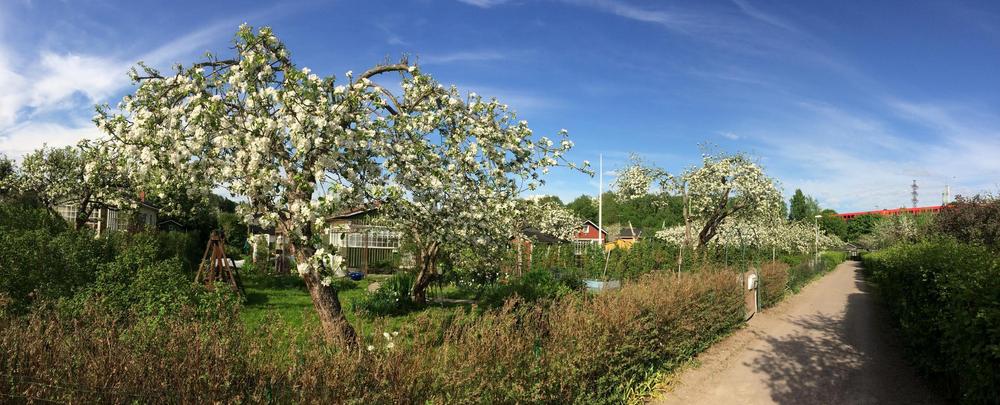Cultural History Trail
Sign 1
Welcome to the Herttoniemi Allotment Garden!
The signs on the cultural history trail through the Herttoniemi allotment garden tell about the area’s history, buildings and original garden plans, as well as the daily life and festivities of the cottage dwellers over the decades.
Modern Allotment Garden
The rapid growth of the city and the poor living conditions of the working class inspired Helsinki to establish allotment gardens in the early decades of the 20th century. The Herttoniemi allotment garden was founded in 1934 in the grounds of Kulosaari Manor.
In many ways, Herttoniemi was more advanced than the earlier allotment gardens in the Ruskeasuo, Kumpula and Vallila areas of Helsinki. Mains electricity was installed and provided to the area and the cottages, something the other gardens did not yet have. Herttoniemi also had a drinking water well, a public telephone, postal delivery and a boat dock. Water for irrigation was pumped from Saunalahti to a filtration tower, from where it was directed to the plots after desalination. Additionally, a shop was opened on what is now the site’s car park.
Over the years, what was once described as just a “desolate meadow” has been transformed into a lush park. The garden was protected in the 2007 zoning plan. The area is also a nationally significant built cultural environment that can only be developed in a way that preserves its values and distinctive features.
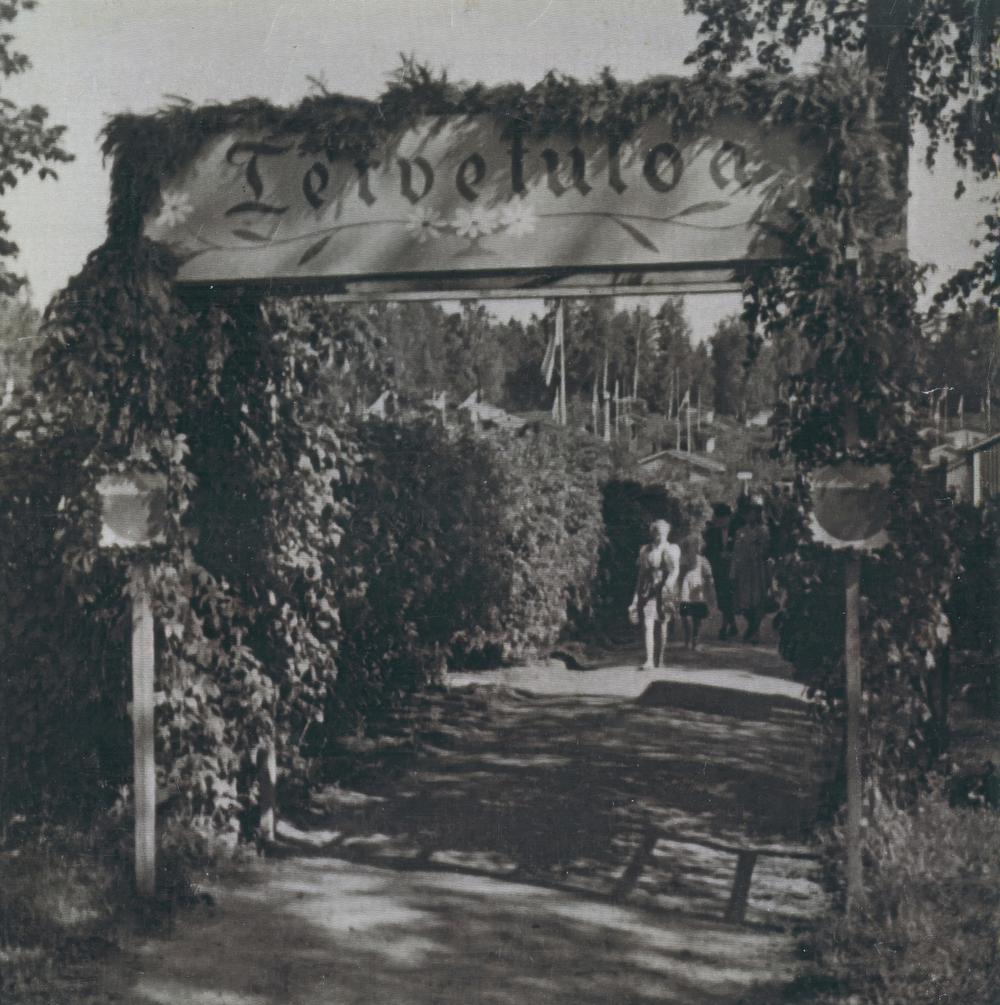
Sign 2
Visiting
Afternoon coffee, summer parties or just strolling around the paths – there’s always been a good reason to visit the allotment garden.
In the early decades of the allotment garden, visiting was very popular. Many who spent their childhood in the area in the 1940s and 1950s recall that there was always someone visiting, a relative or a friend. Many stayed longer. Although the cottages are small, there was always enough room.
The allotment garden is an open recreational area where anyone can take a stroll to enjoy the beautiful plants, trees and flowers and the tranquillity of the gardens. However, entering the cottages’ gardens is allowed only by invitation.
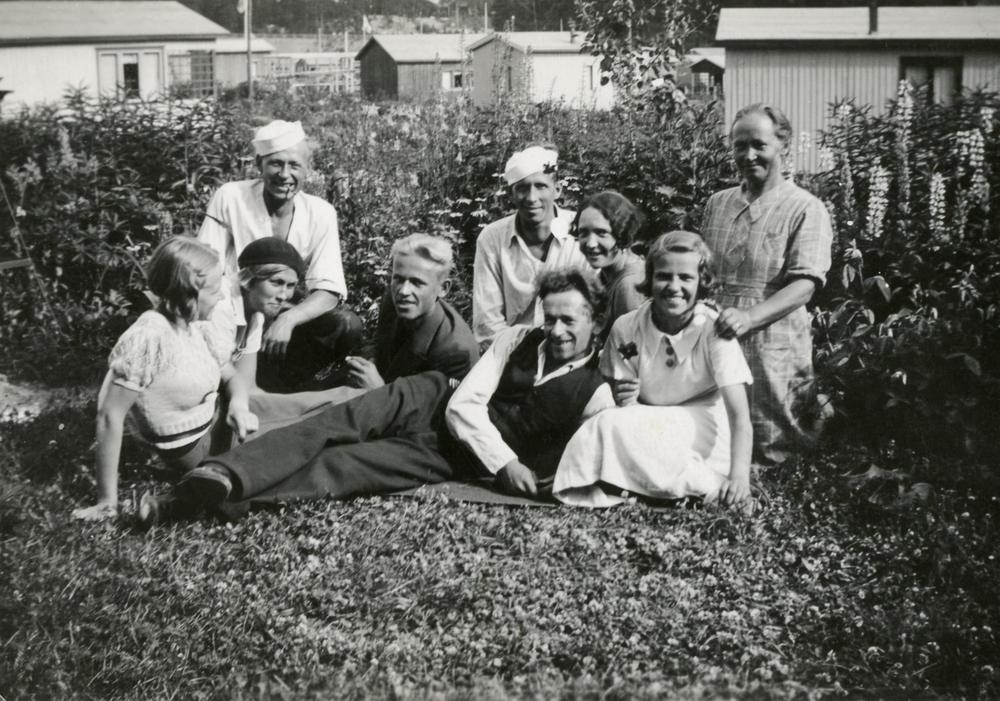
Sign 3
Cottages by Design
The original cottages were 13 to 18 square metres in size and had an open veranda. They were larger than those in earlier allotment gardens.
The aim of the city-approved standard design was to ensure that the area looked uniform and that the cottages were of good quality and in harmony with their surroundings. The appearance was to avoid unnecessary variegation and ornamentation.
Some of the first cottages in Herttoniemi were as big as 24 square metres, including the open veranda. The cottages had space for two bunk beds, a kitchenette and larger cupboards and storage spaces than before.
.jpeg)
Sign 4
Elisabeth’s Influence
Many original gardeners ordered a cultivation plan for their plot from the city’s gardening adviser, Elisabeth Koch.
The garden plans of the cottage owners have been guided from the start by the zoning plan and the lease agreement, which requires that the plots be cultivated and kept tidy. The gardens were also intended to be uniform and aesthetically pleasing.
Elisabeth Koch divided the garden into three parts: a kitchen garden, a berry and fruit garden, and a decorative garden. In front of the cottages, an area was reserved for relaxation and socialising.
Koch’s plans are still visible in the area. For example, straight paths from the gate to the cottage and flower beds along the paths were typical of Koch. Although Koch created detailed plans for the plots, she also believed that a garden is never finished and that the pleasure of refining and adapting it is everlasting!
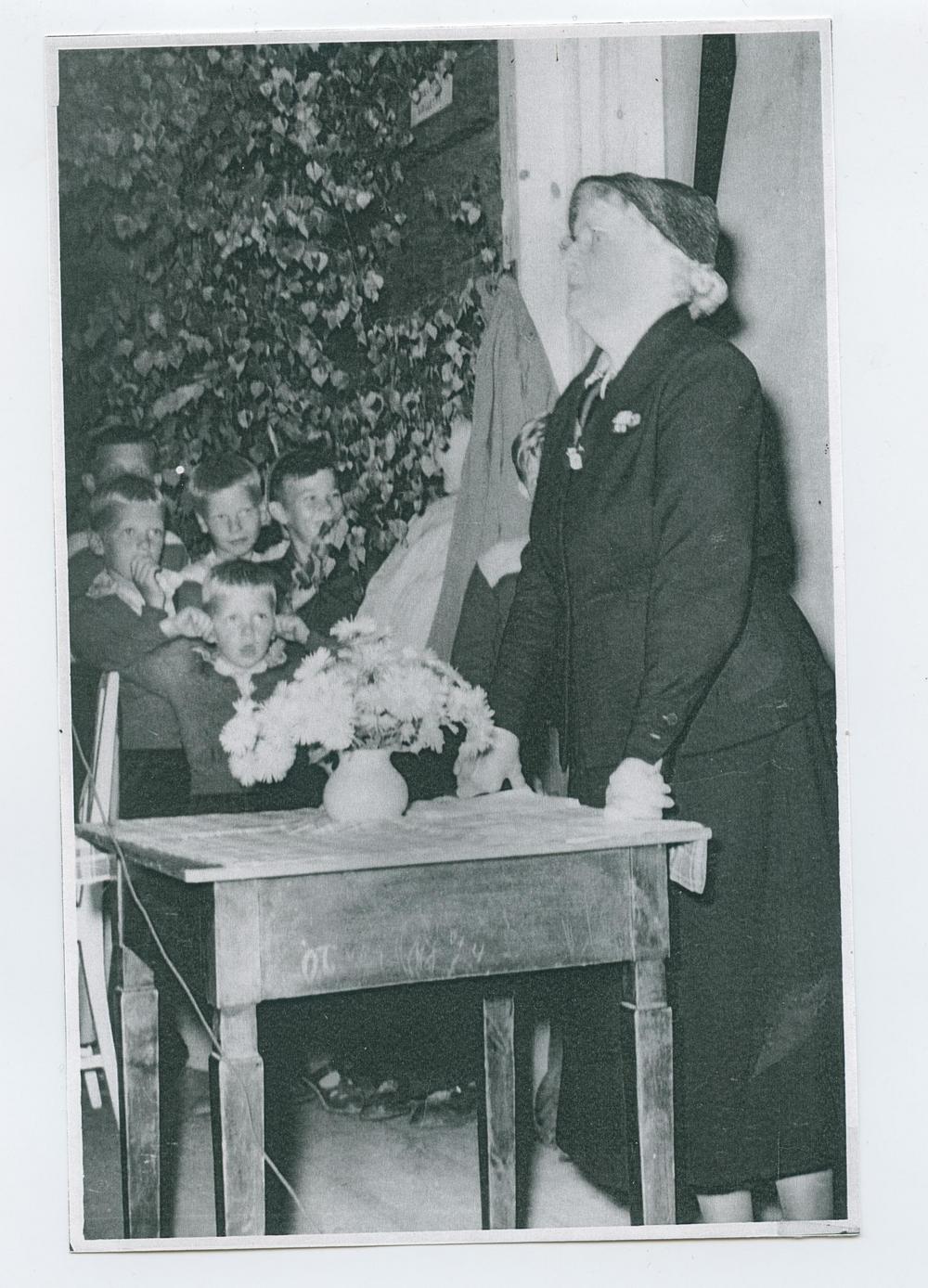
Sign 5
Summer Friends
Clubs, choirs and Wednesday have been among the favourite activities for children and youngsters in the garden.
In the early days, many children stayed in the cottages all summer long. If the parents worked, older siblings or neighbours looked after the younger ones. Besides their own gardens, children have always enjoyed the area’s fields and pathways. There have been various swimming beaches over the years; now the nearest beach is in Kivinokka. Clubs were very popular, especially during the 1940s, 50s and 60s, where children put on plays, played football, did handicrafts, danced and much more.
One of the garden’s oldest traditions is the children’s “Olympics”. Even today, the children’s running race attracts a large crowd of runners and cheerleaders. In addition to running, the events have included javelin, boot and ring throwing, the standing long jump and shot put.
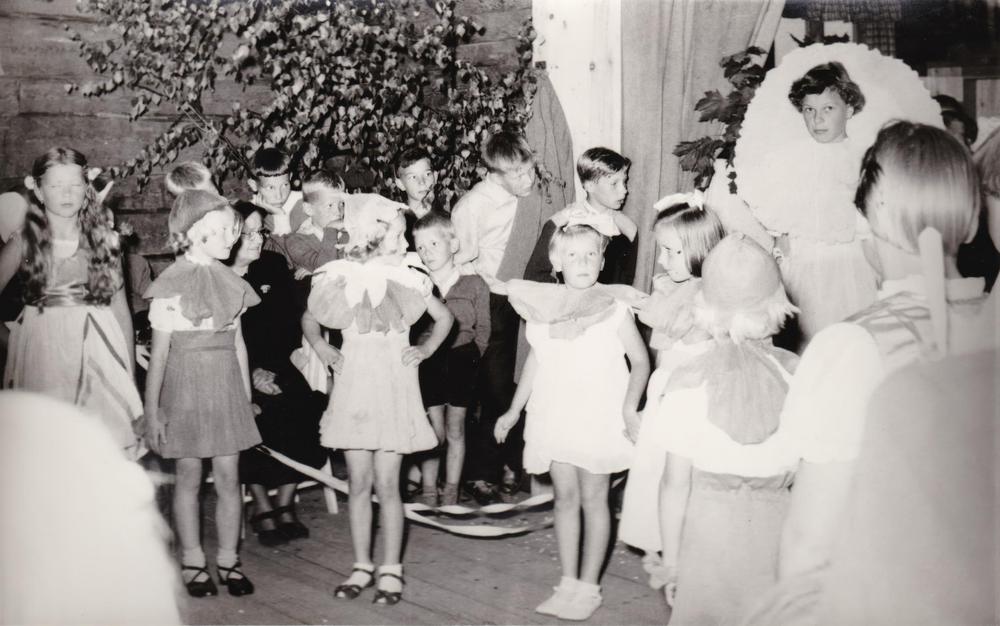
Sign 6
Memorable Places
In and around the allotment garden, there have been a number of buildings and places that have served the cottage owners, some of which have disappeared over time. Fortunately, some have been preserved for future generations.
Summer Elanto
The Elanto shop, which was formerly where the current car park is, served the gardeners for almost 50 years, from 1934 to 1982. The store sold everything from milk and sausages to garden tools to sweets. The building burned down in 2001.
Telephone booth and well
Herttoniemi’s progressiveness was already evident when the telephone booth was built at the playground in 1934. News was also exchanged at the drinking water well next to the telephone booth. Mains tap water was introduced in 1948 and the telephone booth was removed in 1998.
Old water tower
The water tower at the garden’s northern edge was built in 1934. Water was pumped from the sea to the tower and directed to the plots for irrigation after desalination. In the 2000s, the water tower served as the allotment garden’s library for a few years.
Drying barn
The drying barn overlooking the Herttoniemi allotment garden was built in the mid-1750s as a tobacco barn for Kulosaari Manor. The drying barn is one of the oldest preserved wooden houses in Helsinki and a protected site of the city museum.
When the Herttoniemi allotment garden was established in 1934, the city gave the barn to the association to use as a meeting and event space. Since 2023, the drying barn has been owned by the Herttoniemi Allotment Garden Association, who are restoring it in keeping with its original design and largely through the efforts of volunteers.
Kristikka
The handsome wooden house at the garden’s main gate was previously known as Kristikka, named after the Christian Workers’ Association that owned it. During the war, the building served as a hospital and after the war as a kindergarten. The building now belongs to the Oranssi Asunnot, a non-profit organisation providing communal and affordable housing to young people.
Old police station
For a long time, Herttoniemi’s police station neighboured the allotment garden. The building, located between the current Kipparlahdenslingan and Itäväylä, was demolished during the expansion of the Itäväylä in the 1960s. In the 1750s, Kulosaari Manor’s main building was located on the same site.
Kipparlahti beach
Kipparlahti beach was widely used in the 1930s and 1940s. People jumped into the sea from both the piers and high cliffs. In the 1950s, swimming ceased when the Paasivaara margarine factory discharged waste fats directly into the sea. Now there is a marina on the site.
Summer sauna
Herttoniemi’s gardeners built a sauna at Kipparlahti Beach in 1940. During the peak years of the 1940s, there were up to 19,000 sauna goers each summer, and the sauna employed two bath attendants, a cashier and an attendant to heat the sauna. Massage and hairdressing services were also available. The sauna burned down on Midsummer in 1999.
Kulosaari Manor
Kulosaari Manor, located next to the allotment garden, is a significant historical manor house that dates back to the mid-1500s. The main building has been located in three different places: at the north-eastern edge of the allotment garden near Saunalahti Beach; at the southern edge of the garden on the current metro line; and at its present location. The main building was given its pink appearance in the 1810s.
Beach beside Kulosaari Manor
After the water in Kipparlahti became polluted, swimmers moved to the beach at Kulosaari Manor by the small bathing cabin. The bathing cabin from the 1800s still stands in its original location by the Naurissalmi beach, next to the boat docks.
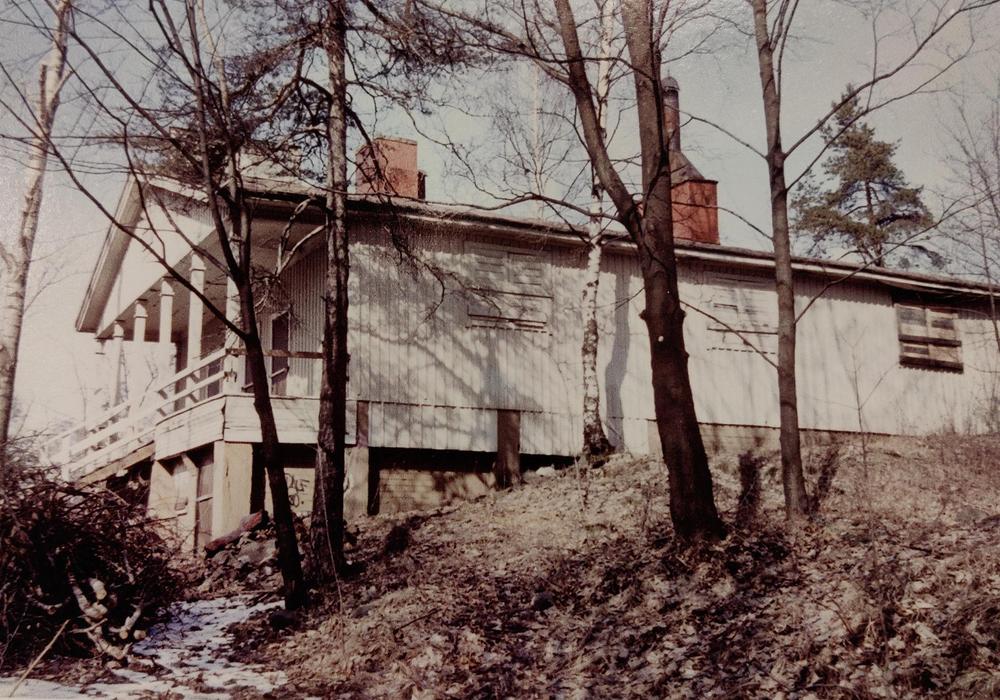
Sign 7
Bordered by the Hills
Herttoniemi’s allotment garden was placed in a valley and on slopes bordered by hills, following the terrain. Part of the area is former seabed.
The variations in height mean that the upper and lower plots have different microclimates and conditions. With soil varying from clay to fine sand, a range of different plants, insects and animals thrive in the gardens. This increases the area’s biodiversity. In the north, the allotment garden borders a nature reserve.
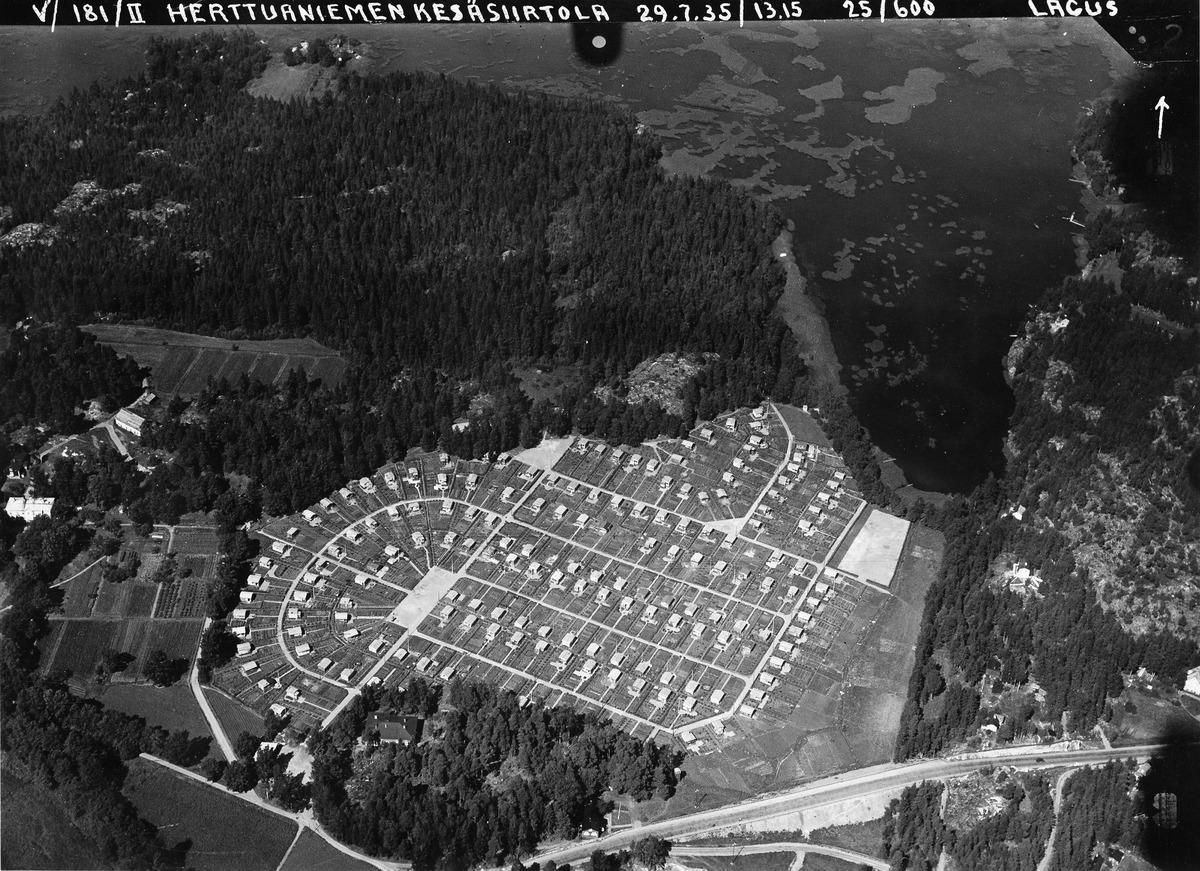
Sign 8
Together
Communal work and shared celebrations have always been an essential part of allotment garden life.
Herttoniemi’s allotment gardeners have been industrious from the beginning. The handicrafts club and croquet club were established the first summer, and the potato-harvesting party the second. The third summer, an excursion was made to Kotka’s allotment garden. Later, gardening trips were made as far as the Netherlands.
Through communal work, common areas and spaces have been cleaned and electricity installed, among many other things. After any project, coffee has always been enjoyed together. Joy and energy have also come from other shared activities. The open soup lunches held in the drying barn in recent years are just one example of the strength of the current community spirit.
Sign 9
Food from One’s Own Plot
Kitchen gardens were important, especially in the first decades of the garden.
Both Elisabeth Koch and the incumbent gardeners preferred vegetable species that could be preserved for the winter. In addition to vegetable gardens, berry bushes and fruit trees were planted on the plots.
During the war, lawns gave way to potato fields. When meat, coffee and tobacco were rationed, more legumes, chicory and tobacco were grown. Until 1947, with special permission, pigs, sheep, rabbits and poultry were also raised. Despite their own great need, the allotment gardens donated food to hospitals and orphanages during the war.
Today, the plots vary from housing large vegetable gardens to small herb gardens.
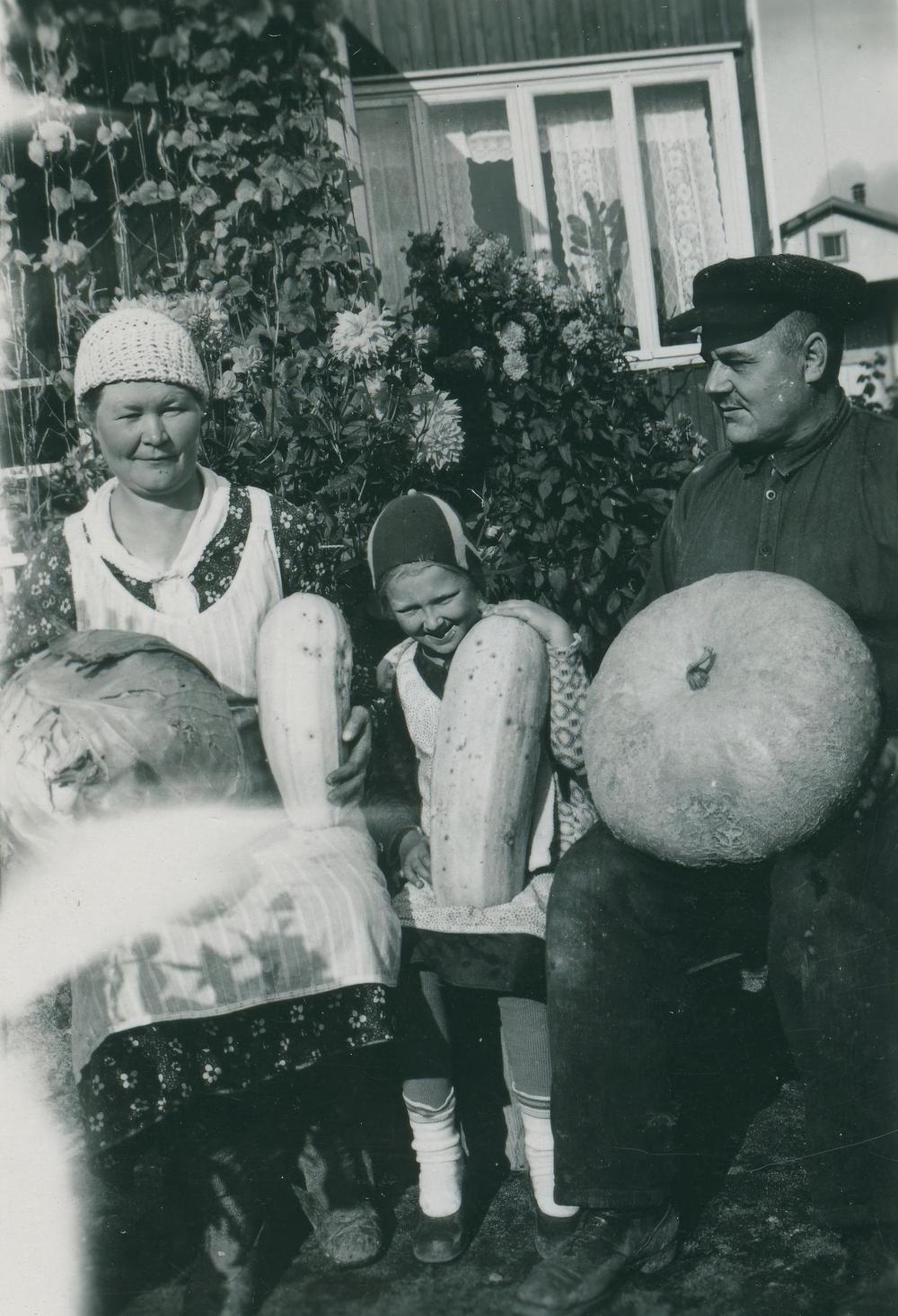
Sign 10
Cottage Colours
The colours of the cottages have been influenced by building instructions, fashions, personal preferences and the availability of paint.
No general colour scheme was created for the Herttoniemi allotment garden and there is no surviving information about the guidelines for painting the cottages. In 2021, the association commissioned a colour study in the area, examining the painting history of 16 cottages. In addition to the light colours popular in the 1930s, red and yellow earthy tones and very dark shades were discovered. During the construction phase, many wooden building panels were reused, so the oldest colours may also originate from other buildings. The colour chart based on the study now allows 13 main colours for the cottages.
The city’s real estate office also proposed gate models for the plots. However, many gardeners designed their own gates. One of the most famous gates in the area is the tulip gate from the 1940s at cottage number 1.
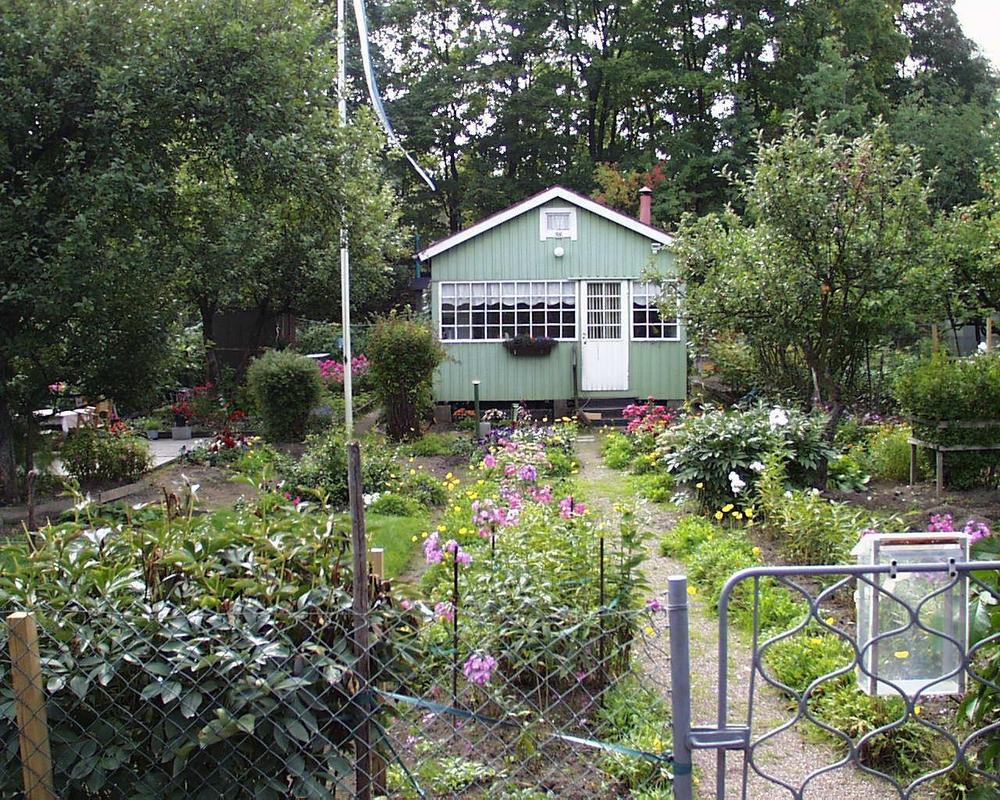
Sign 11
Peony Splendour
Elisabeth Koch’s garden designs often included impressive peonies. The peony is now the signature flower of the Herttoniemi allotment garden.
Many cottages have valuable old peonies in their yards. According to tradition, some plots received their peonies in the 1930s from the railway station, where they were distributed to allotment gardeners during construction works.
Peonies can be grouped, for example by colour, flower type and blooming time. The most common peonies in Herttoniemi are Chinese and hybrid peonies. The earliest peonies bloom in early June, the latest in late July. The peak bloom time for peonies in Herttoniemi is usually in late June and early July, depending on the weather.
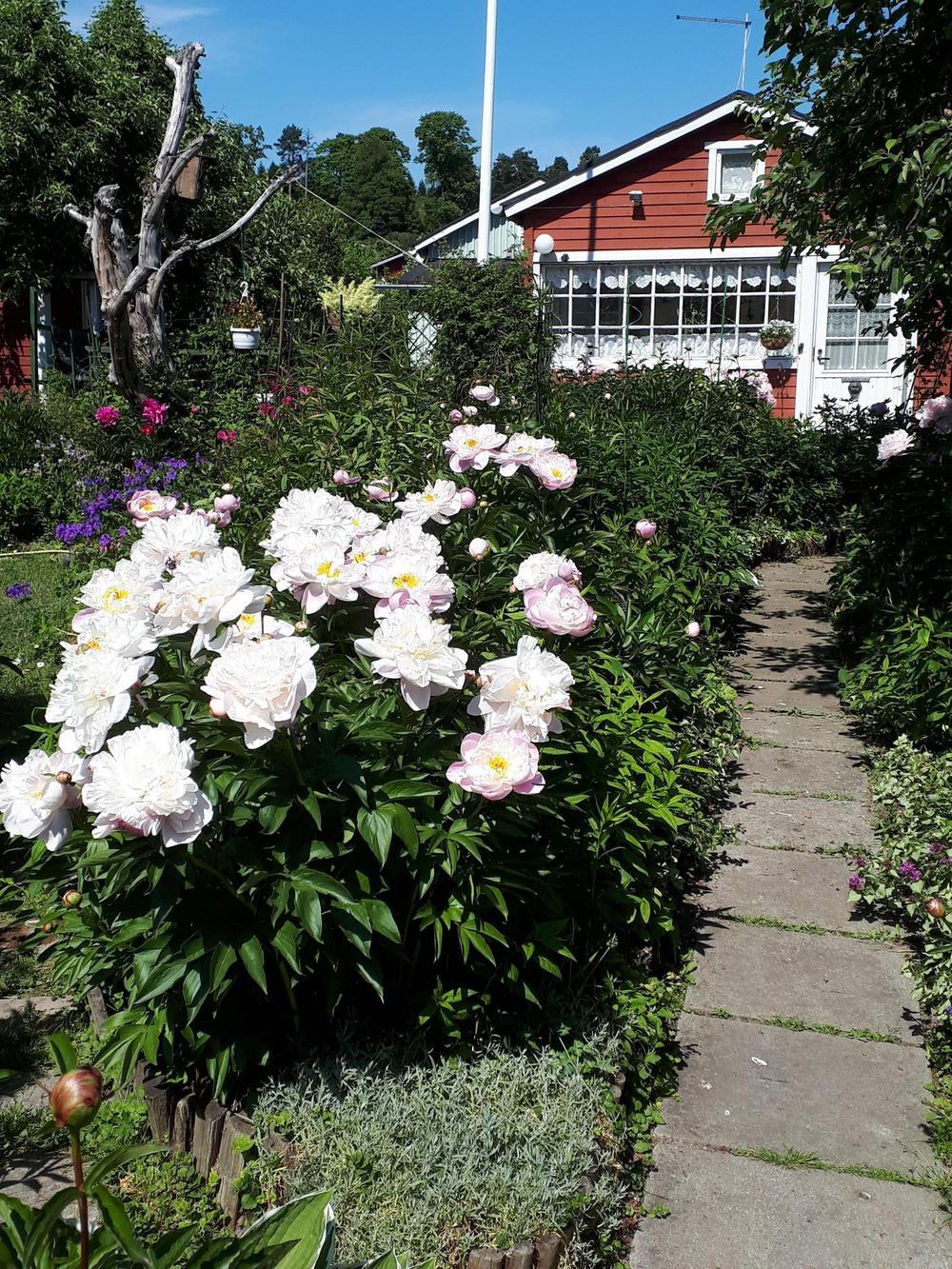
Sign 12
From Blue Buses to Orange Trams
When the allotment garden was built, it was far from the city, on the rural eastern outskirts of Helsinki.
In the early days, the journey to the cottage was made by horse, bicycle, boat or the KB tram to Kulosaari – and then on foot. In 1937, the city arranged a bus that ran a few times a day between the Sörnäinen pharmacy and the garden entrance.
Since then, the journey time from the city to the garden has been shortened several times. The gravel road to Porvoo was widened to become the Itäväylä in the 1960s, and the metro began running in June 1982. Cyclists were the last to get wider, upgraded bike lanes. In 2022, five cottages were moved to the other end of Peony Road to make way for the new bike path.
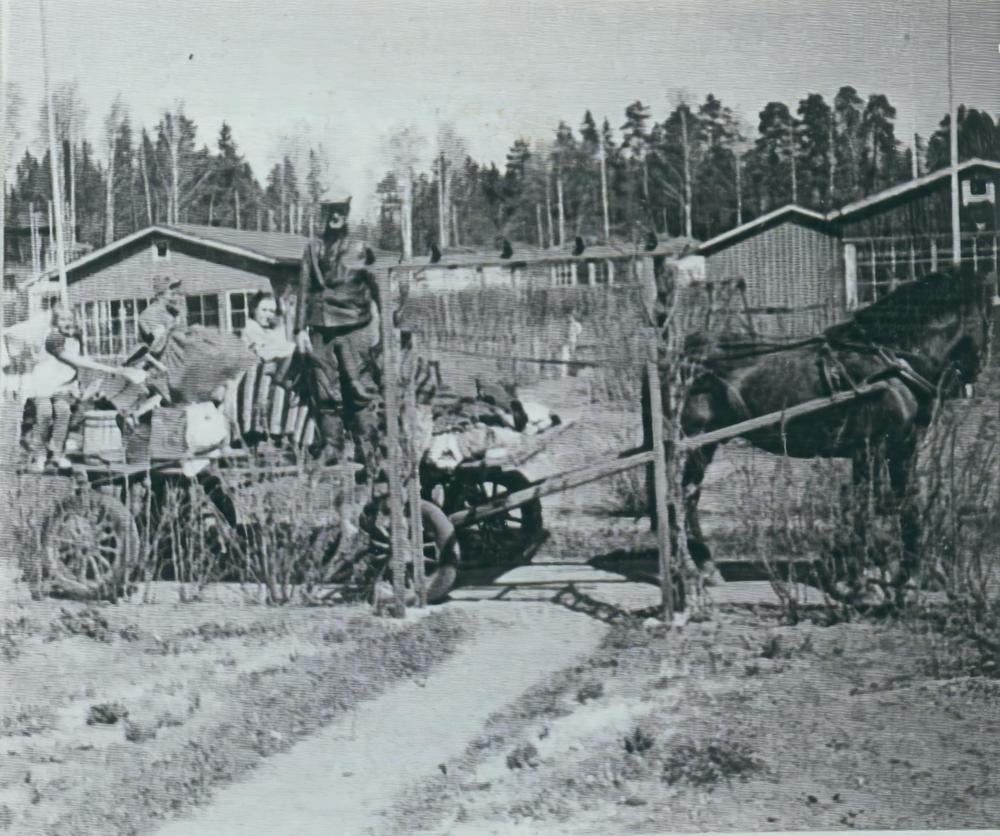
Sign 13
Under the Apple Trees
The original zoning plan provided for each plot to have a cottage and a fruit tree. Today, the spring apple blossom in the area is unmatched!
By the summer of 1937, nearly 40 different apple varieties were growing in the allotment garden. However, the harsh winter and drought of 1940 were devastating for the young apple trees: 408 trees died, and only 86 trees, including Antonovka and Red Calville varieties, survived. However, new branches sprouted from the trunks of the trees that had died. That’s why the old trees have low branches. In 1947, frost destroyed all the plum trees.
Among the current special features of the garden are the largest pear tree in the Nordic countries and an apple tree with more than 20 different varieties grafted onto it.
